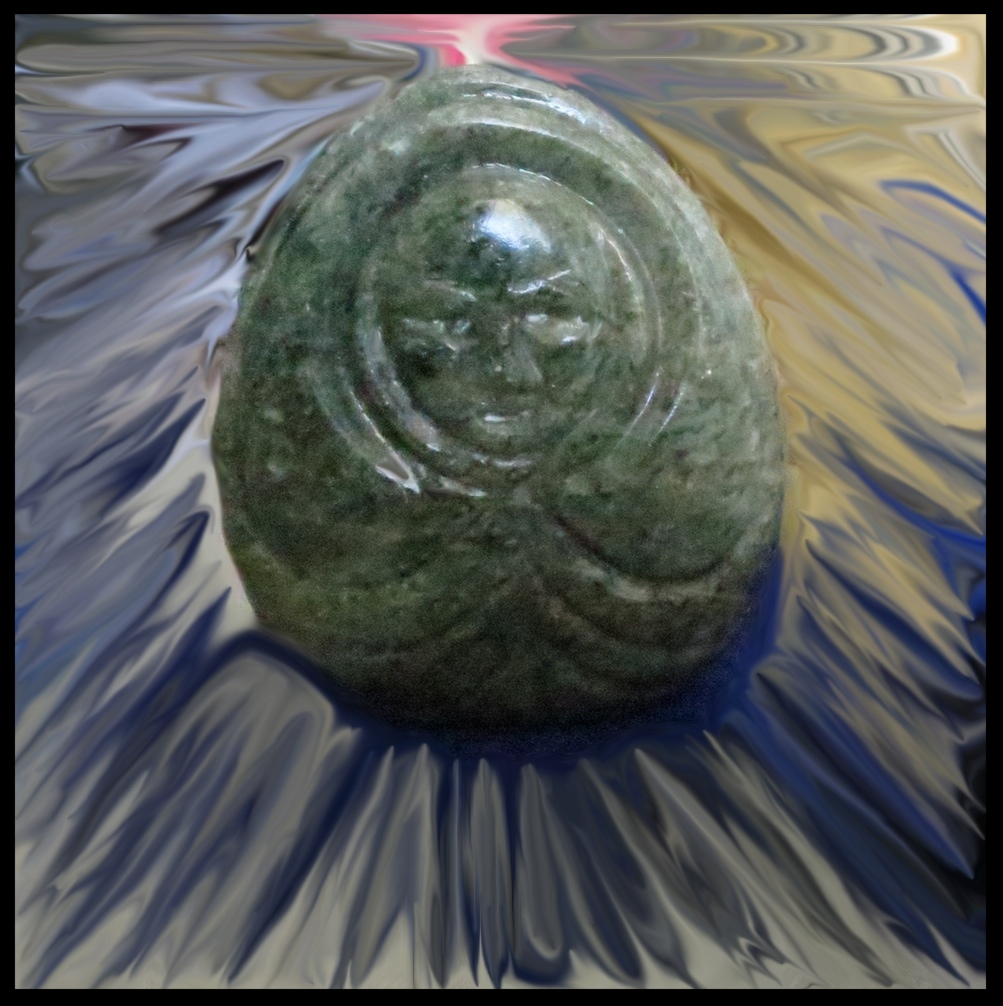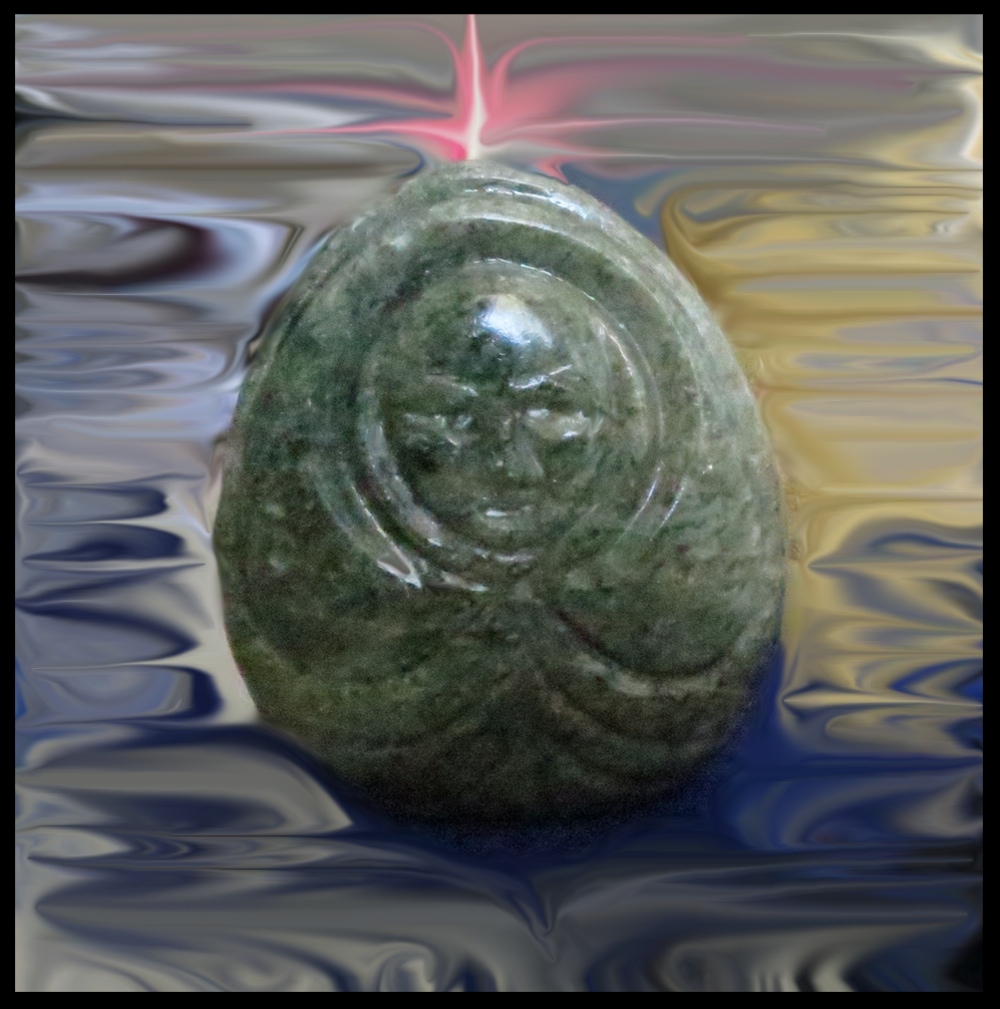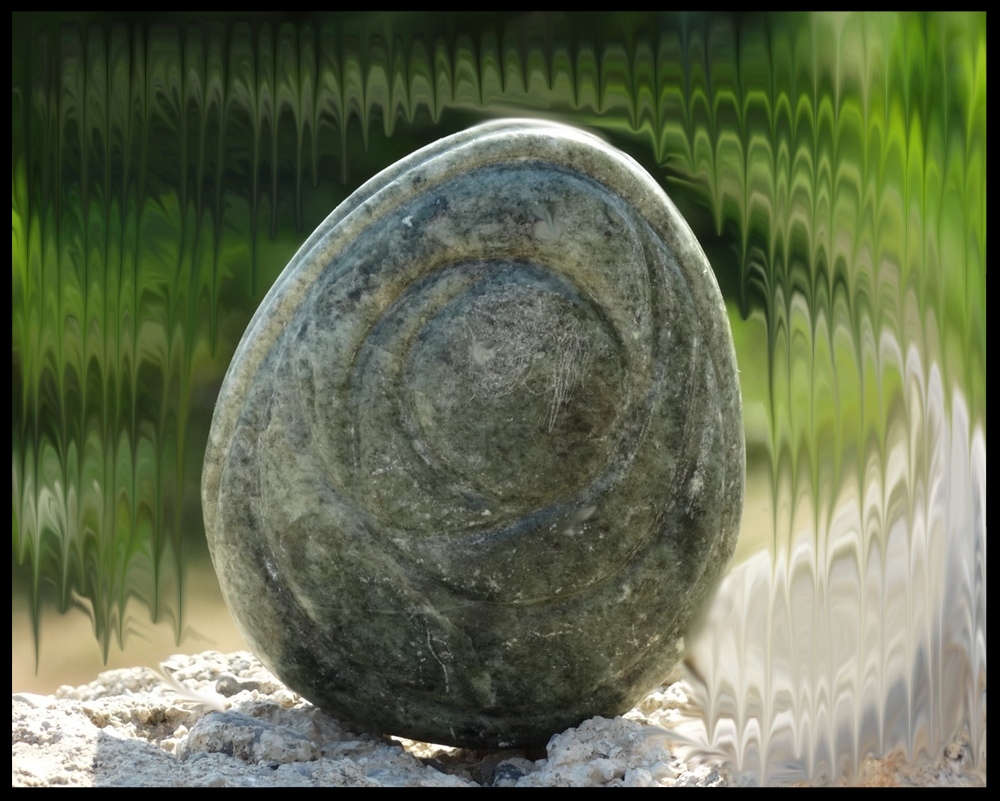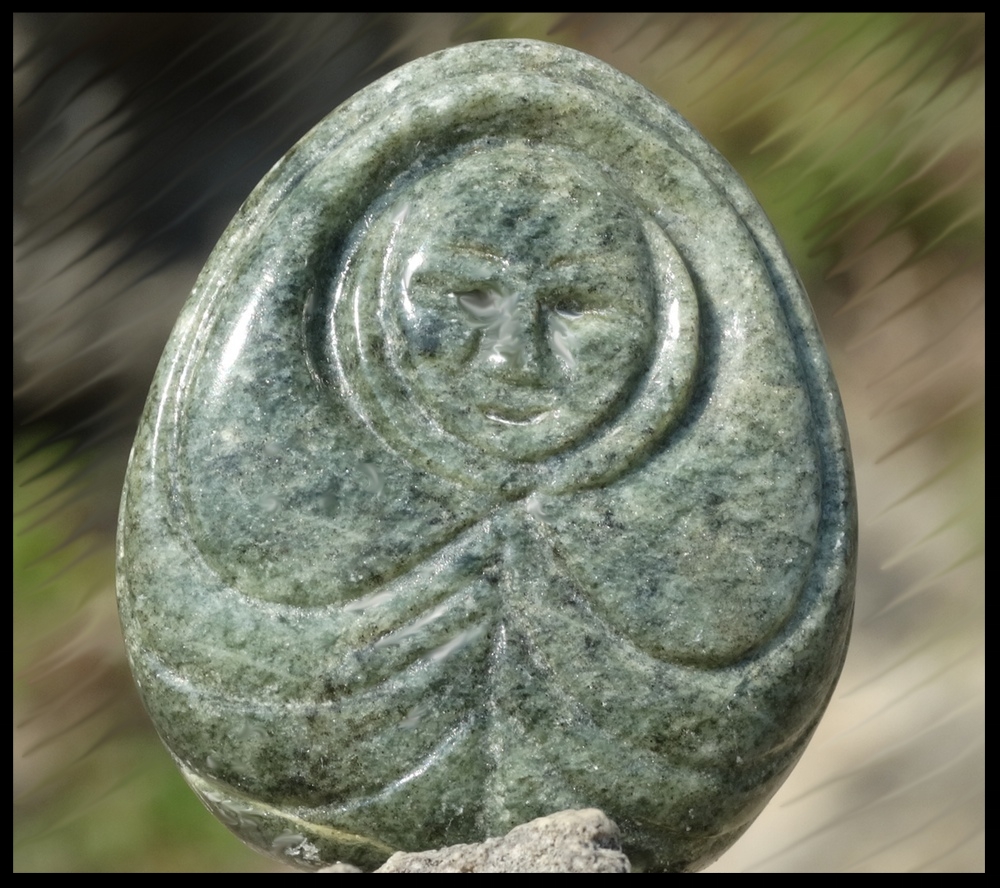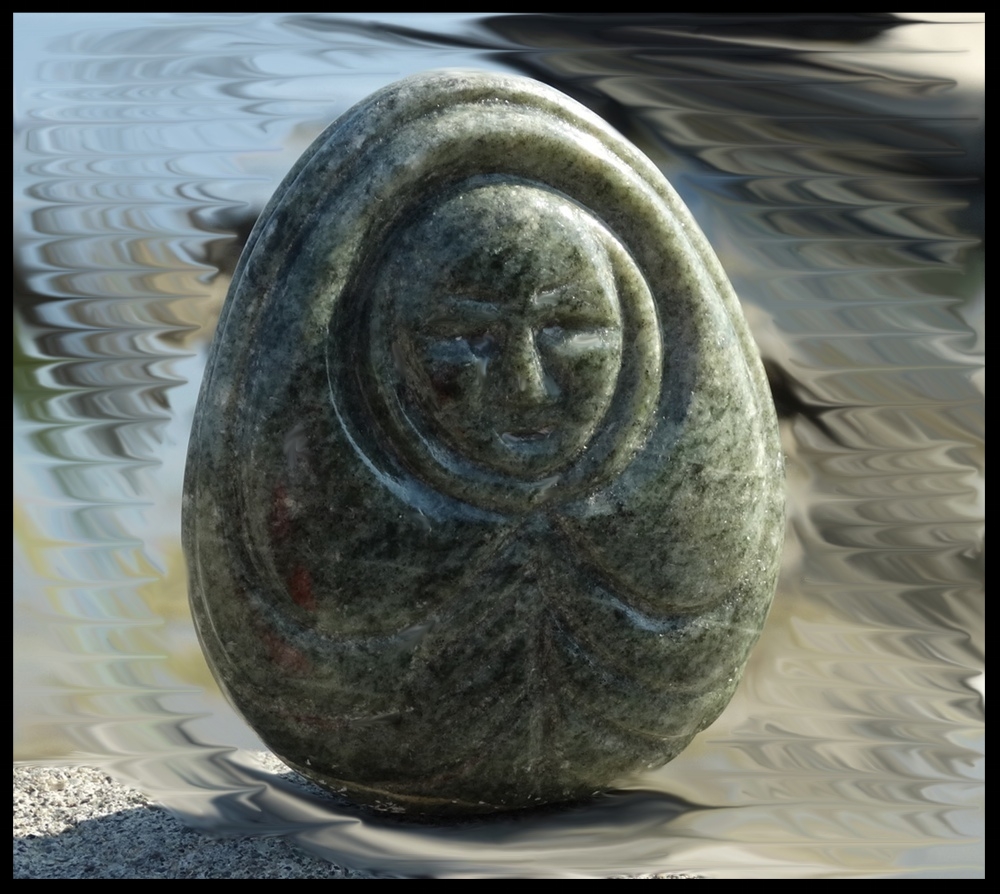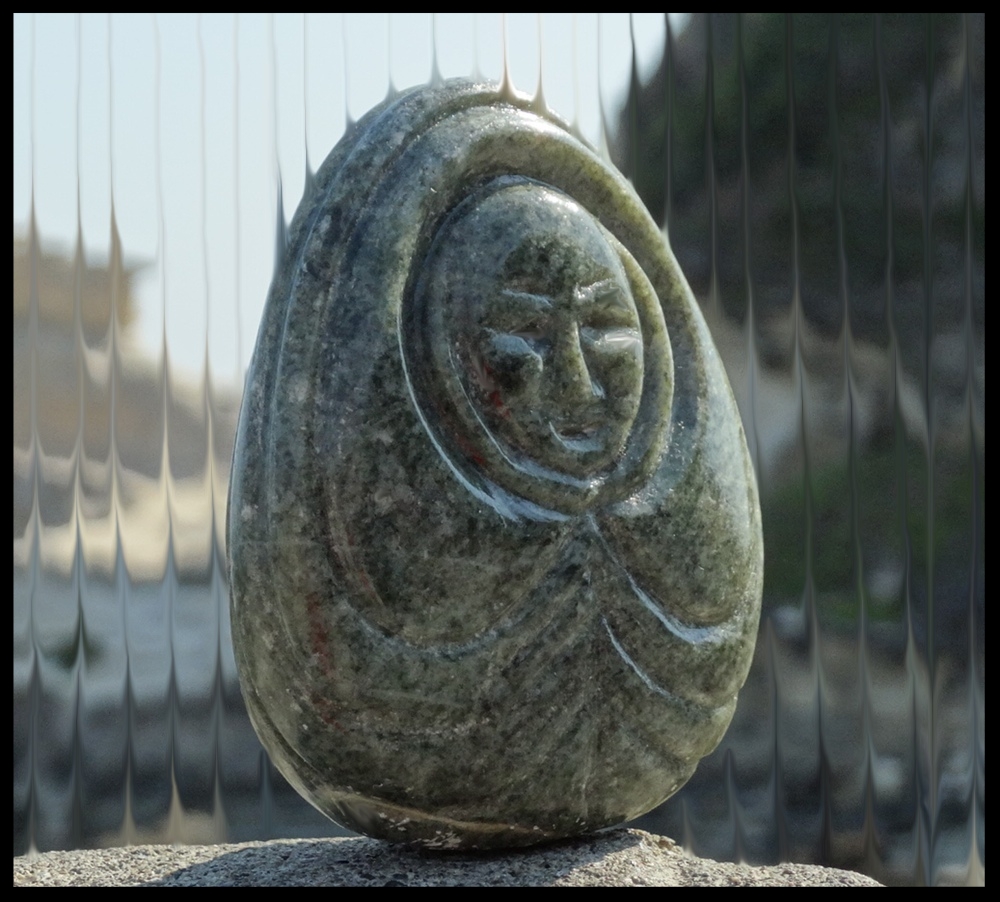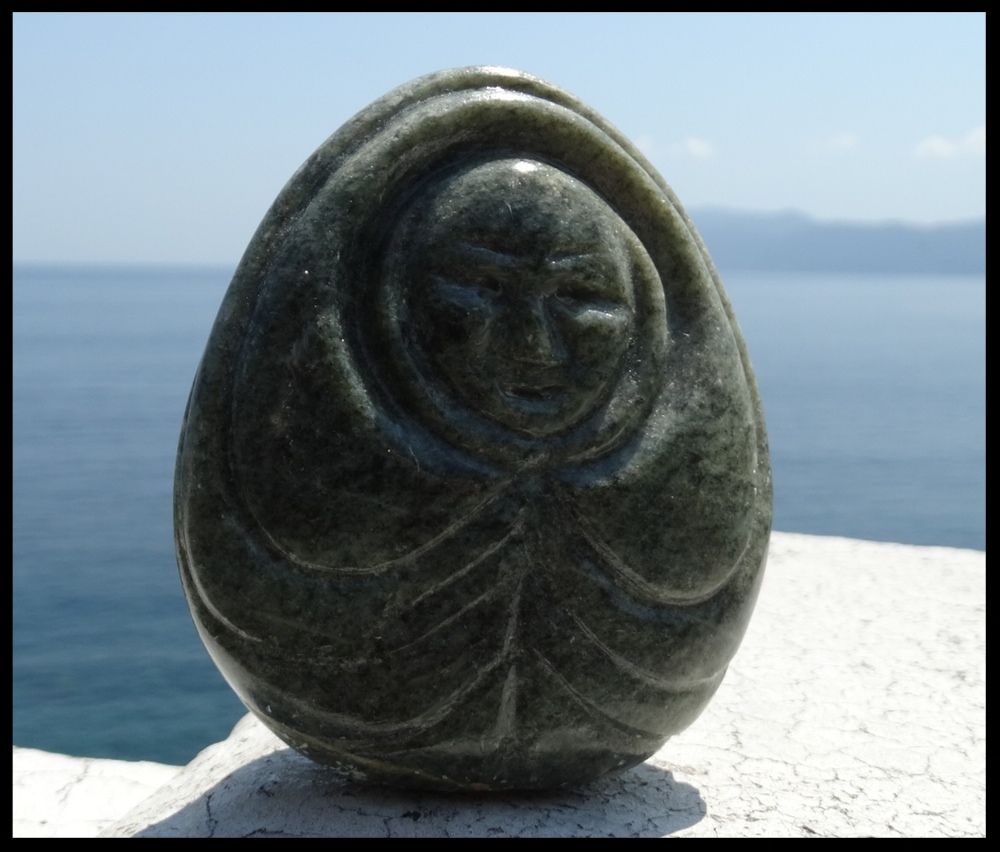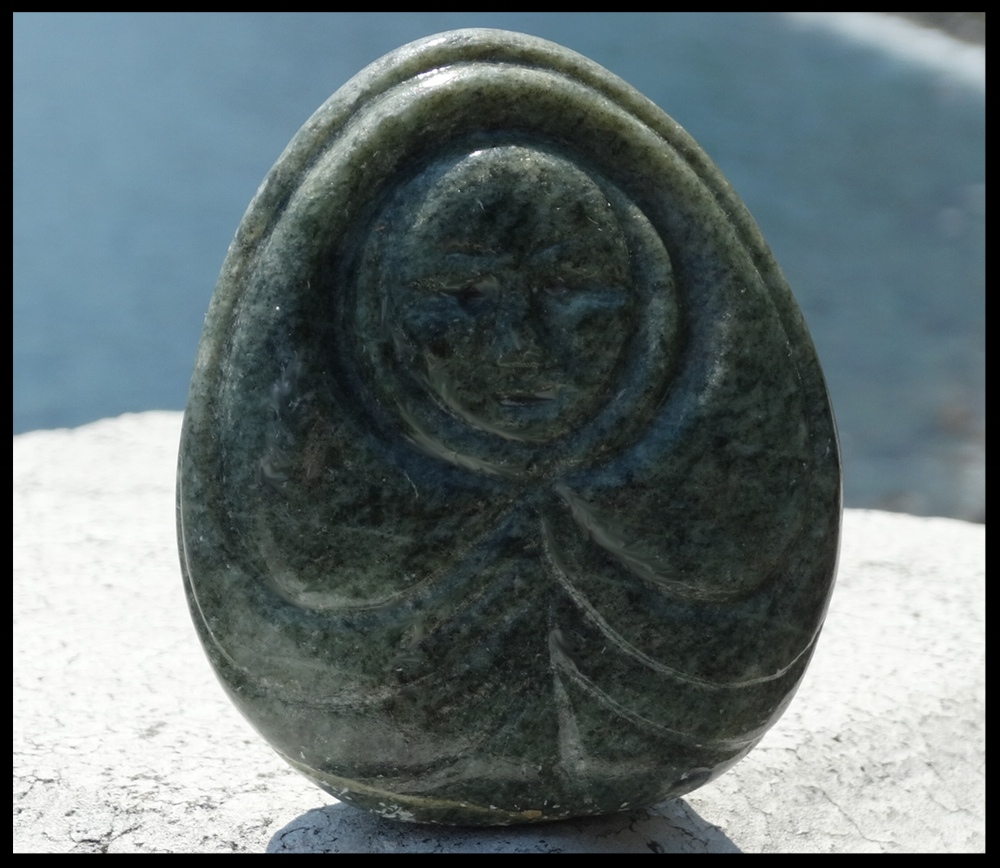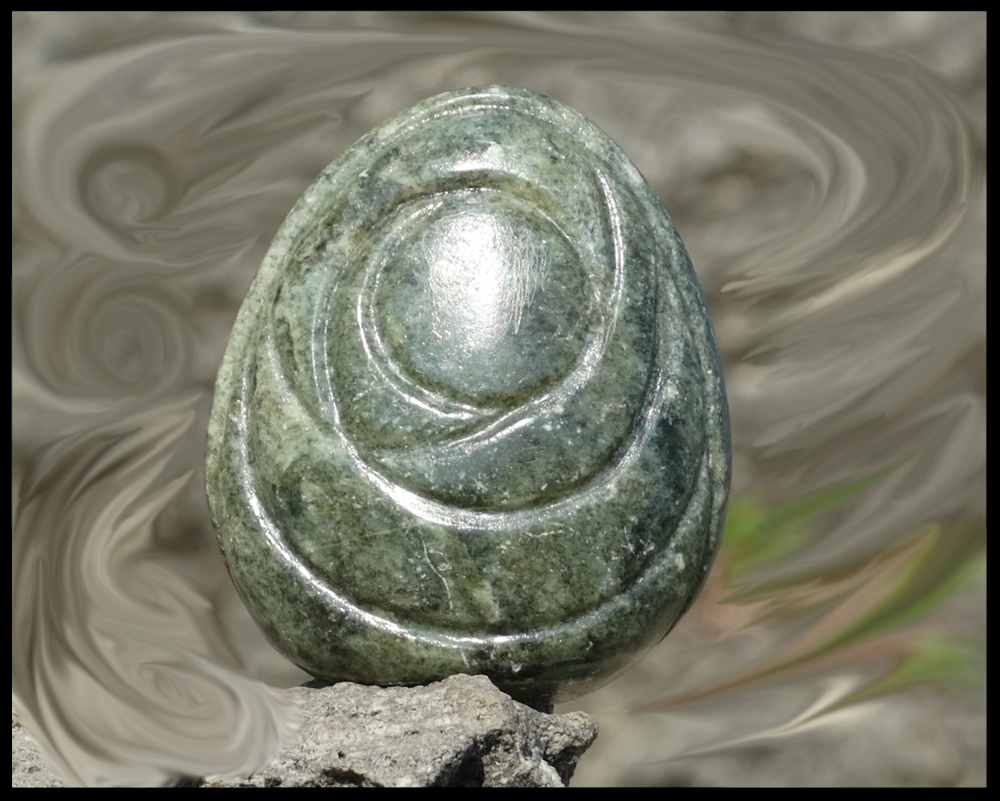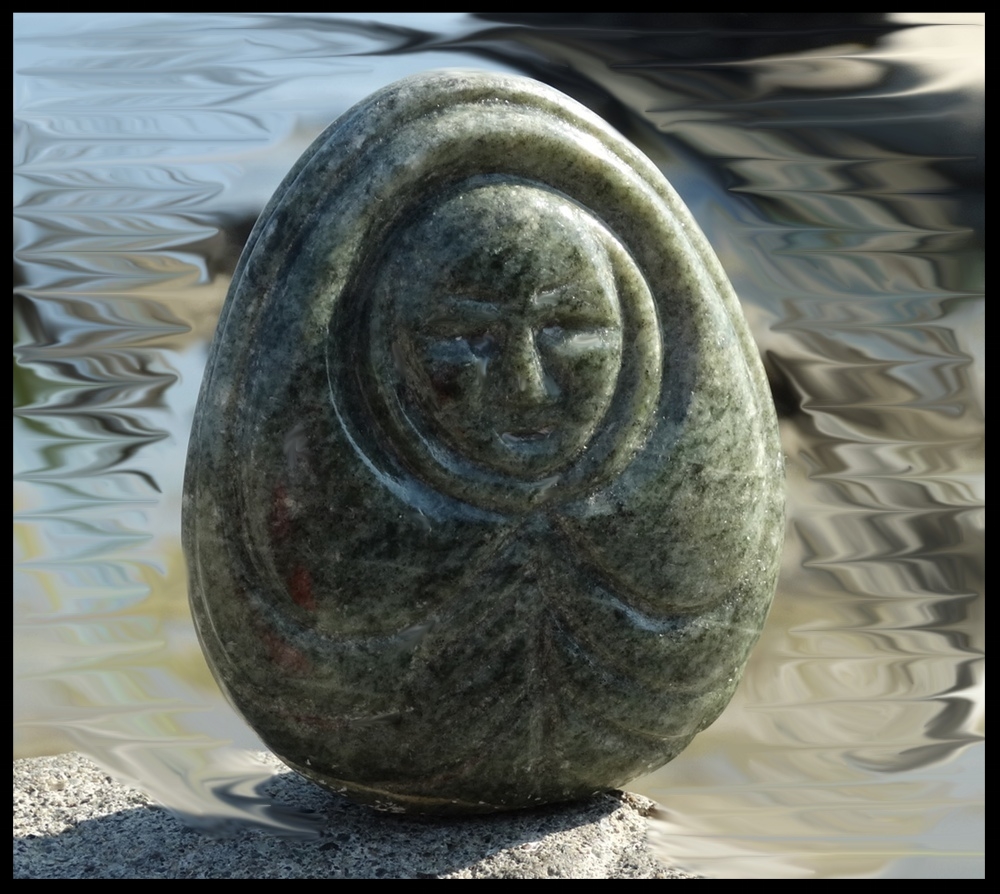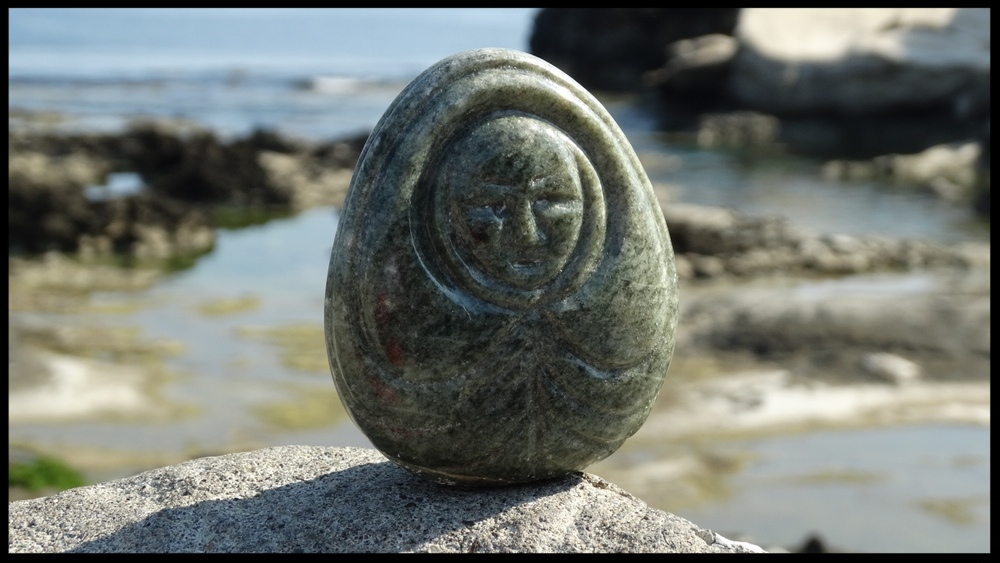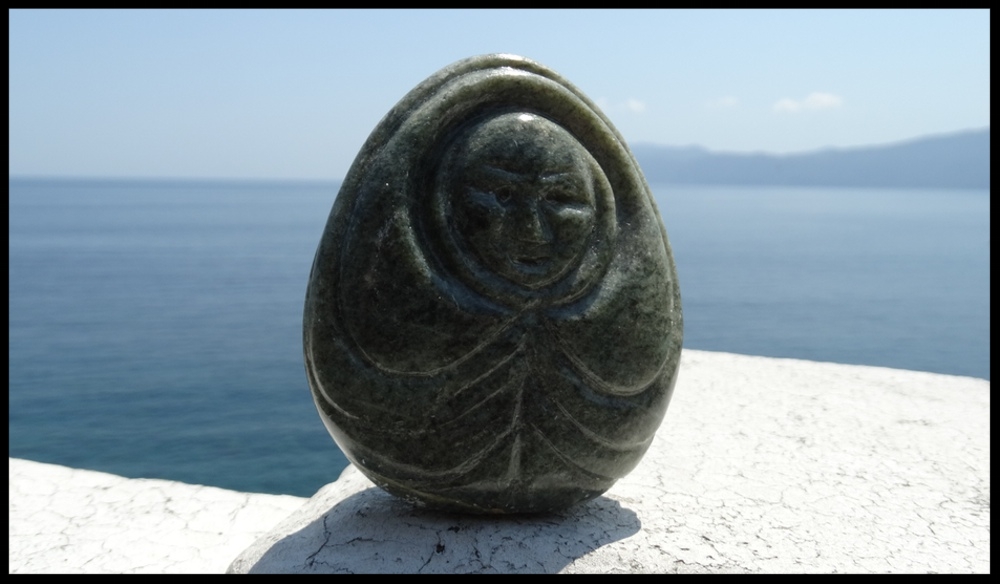The Promise: Filipina Migrant Memories In Flight
Aerial Adventurers: About The Travels of R.C., P.R.P. and Steeped YEG-GA
The journeys of the carving called Steeped YEG-GA were fairly extensive before it was acquired for a final trip to the Philippines by P.R.P. and R.C., two seasoned veteran collaborators of the Homeglen School of One Global Art Project. The piece is derived from one of the first blocks of Brazilian soapstone ever acquired by the School of One of Carver from a rock merchant located somewhere in the environs of southern Edmonton in 2013. Shortly after it was sculpted in January 2016, the patriotic credential of the carving were confirmed when it was used for a "Learning Environment" group project undertaken by some gifted undergraduates enrolled in a History Class at the University of Alberta. For the project, the students documented their observations regarding continuity and change during their travels with Steeped YEG-GA in the North Saskatchewan River Valley and then measured their vignettes against competing theories of "Creative Destruction".
The first vignette found below reveals that the subsequent travels of Steeped YEG-GA to the Philippines proved to be much different from undergraduate expeditions in Edmonton's river valley. The reason for the "aerial adventure" across the Pacific centred upon a promise that R.C. made to her Filipina mother several years ago. R.C. became a Canadian citizen in Spring, 2016 and for several years she has worked in the service industry in Alberta, including in the town of Banff, comfortably nested in the National Park of the same name. Most Canadians know that Philippine immigrants constitute one of the fastest growing minorities and their contributions to the national "commonweal" in destinations West and North have been impressive, yet seldom acknowledged. Meanwhile, the second set of vignettes of the trip found in "Part II" were undertaken from a very different "native Canadian" perspective. These vignettes are the handiwork of P.R.P., the partner of R.C., and a self-described "Conservative Albertan" who believes fervently in recognizing the rights, contributions, and agency of female immigrants to Canada, past, present and future. Due to the thoughtful collaborations of the "dynamic duo" found here, the carving Steeped YEG-GA, now a permanent "foreign resident" of the Philippines, is dedicated to the contributions of Filipina immigrants to Canada, especially those of them found in the service industries who continue to treasure the memory of their own female ancestors.
Part I: Citizen Filipina R.C. Revisits Her Promise, Spring 2016
I was born and raised in the municipality of Silang, province of Cavite, Philippines. This is a tropical country and we only have two seasons: Rainy and Sunny. Our nation is celebrated on the global stage for its beautiful and bountiful natural resources while an abundance of man–made products are also found here. I lived for most of my life in the southernmost part of the country (far away from "the Metropolis", Manila) and this area, where I was raised by my parents, is renowned for good weather and warm people. My father worked as a shoemaker and my mother distinguished herself as a diligent and hardworking housewife. Life was really hard on them, especially with six children. But thanks to my father’s hard work, we were able to go to school and finish our college degrees.
From the time I have known the world, we moved from one house to another, which also meant that we shared our household with our great grandparents and we never owned our own home. My father’s family story is somewhat ironic in this regard since my grandparents actually owned vast properties in Silang. Due to mismanagement of their estate, however, they sold all of the land and their descendants were left landless as a result. Being landless in your own hometown feels very degrading. It’s like you are migrants from your own native place. Certainly, almost everyone in North America has heard the word “migrants”, but I am not completely sure that the word has the same meaning in Canada or the U.S.A. as it does for people in the Philippines. Here, it’s a big deal. Whenever people would ask me where I resided, I would just tell them, honestly, that I lived in our great grandparents' house. The next question would almost alway be, “From what province did you come from?”, even though we were legitimate residents who originated from the same home town. This explains why my personal goal and greatest challenge was to leave the country and find a good job abroad. This way I could pursue my larger plan to build my own house for our family, a promise I made to my mom when she was still alive. In December, 2007, I was given the chance to work in Canada. After two years of living in the northern nation, I was able to save some money and was able to buy a parcel of land in my home town. It was very tough on me to go to the country where I didn't know the culture, the climate, the people, and or even the job I would work at once I arrived.
I bought the parcel on a piecemeal basis, payable over two years with no interest and the history of the land itelf followed a familiar inheritance pattern. The plot was part a larger piece of land inherited from the parents of a friend (who we know very well) and her siblings. The land was divided amongst the children and part of it was sold to us. In early 2011, I began to plan to construct a house since I now had enough savings. Unfortunately, due to an incident that happened to my mother, I had to spend the money for her hospitalization, and later, on her burial. I was in enormous emotional pain at that time and I wanted to go home. I had purchased a plane ticket but was unable to leave because I was still waiting for my papers for permanent residency in Canada, and, sadly, I was not able to get the documentation processed in time. I really regretted that my plan to build a house for my mother was not realized before she passed away because I really wanted to give my mom something that she deserved. On the other hand, with my house savings, I was still able to pay for her stay in the hospital and for a decent memorial service. I guess that’s the only thing I could give her without my presence, during this very difficult time of enormous grief for my entire family.
People say, “The right thing comes at the right time”, and, especially, when you have someone who supports you in your endeavours and goals, it makes you stand firm in your resolve. My partner here in Canada supported me to and pushed me to pursue my plan. And thanks to P.R.P, I finally decided to make my dream a reality in the middle of last year. I saved some more of my own money and took a loan from the bank. Originallly, I was going to build a bungalow but my partner and I discussed alternatives when I finally saw the architectural plans for the house. We decided to build a two-story house so there would be enough space for us to move around comfortably while the rest of my family lives in the other parts of the residence. At first, it was really difficult to get things moving on the construction. Finding skilled carpenters took a lot of time and patience while looking and buying good materials for the building took a lot of effort. Construction started June 23, 2015, and the residence became habitable on September 30, 2015. My family moved in by October 13. It is still not completly done because more funds are still needed to complete everything. So, once again, I am saving up while working at more than one job, and I know that in time the house will be completely done with God’s help. Indeed, it will be a personal accomplishment and triumph, one that is dedicated to my family so that we will be no longer be called “migrants“ in our own home town.
Part Two: P.R.P. Observes In Support, Spring, 2016
Windmill Farms Bangui area, Ilocos Norte, Philippines
10:33AM, April 8, 2016. 38°C
The Bangui area has is a coastal area on the northern part of the main island in the Philippines. The area has been designated as a site for large windmills that generate massive amounts of energy. It is also a popular destination for tourists as the coast views are breathtaking. Indeed, the constant pounding of the waters on the rocks for thousands of years has created amazing geological formations. The jagged rock areas give way to some amazing limestone formations.
The area is popular for hiking as there are numerous winding paths visitors can take. Visitors are also provided the opportunity to ride horses along the paths. Along the coast there is a long beach area with windmills equally spaced apart. Given the beach is not sand and the chiselled pebbles are very coarse, it is not a place where people set up their beach towels and bathe. It is very popular for the long strolls along the coast.
Pagudpud, Ilocos Norte Philippines
12:04PM, April 8, 2016. 40°C
On the north end of the main island in the Philippines is a gorgeous drive along the coast. The road is built on an aqueduct to allow year long travel due to the elevation of the tide. The views are so spectacular that that many tour buses stop for visitor to take pictures. The road is built up on the side of a mountain and winds itself around. One does marvel at the feat of engineering to undertake such a project. That its completion does not only serves as a necessary transport route for locals on the northern part of the island, but provides gorgeous views that are worth the drive.
